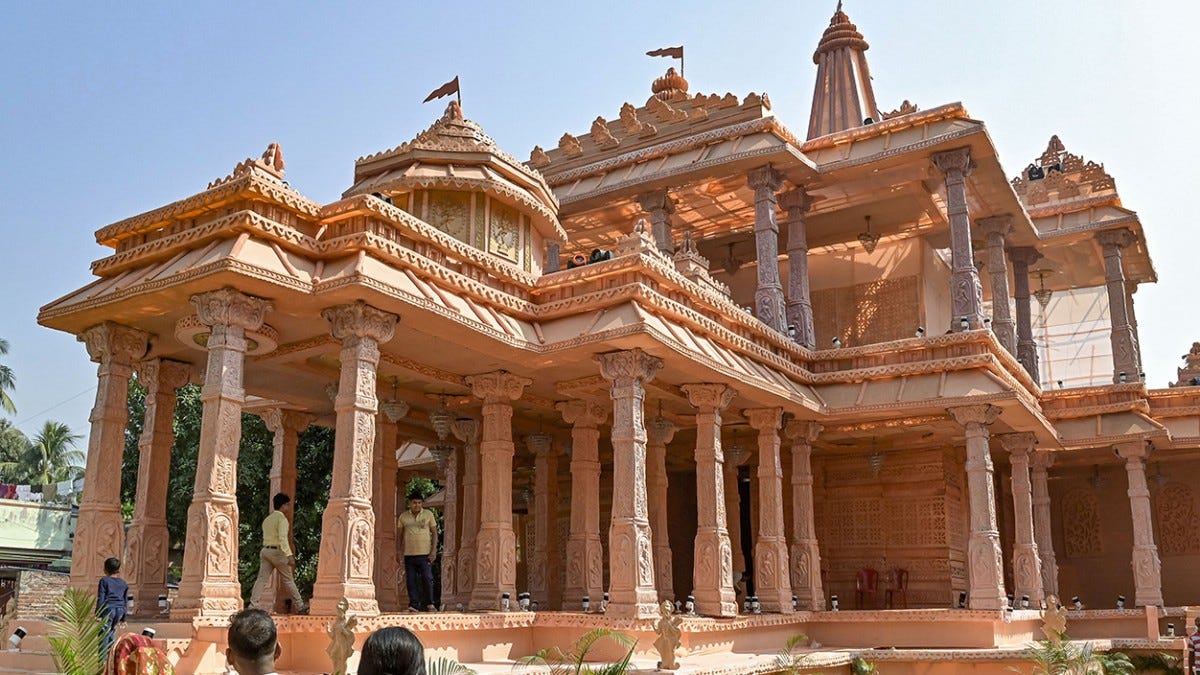Tale of Maharaja Janaka and Sage Ashtavakra: Timeless Lessons
Timeless Lessons from the Tale of Janaka and Ashtavakra: Reflections on the Consecration of Ram Mandir.
Consecration of Ram Mandir: Maharaja Janak and Sage Ashtavakra"
As we approach the auspicious moment of the “Abhijeet Muhurat” on 22nd January 2024 at 12:20 PM IST, marking the consecration of the Ram Mandir at Ayodhya, our minds naturally turn towards the enduring tales from our ancient scriptures. Among these, the story of Maharaja Janak, father of Sita Mata, and the sage Ashtavakra stands out for its depth and relevance. Maharaja Janak, not just a brave and noble king but also a revered scholar and 'Brahmgyani', provides a timeless example of spiritual and worldly balance. His encounter with the young, differently-abled sage Ashtavakra offers profound lessons for contemporary society.
The Story of King Janaka and Ashtavakra
Many millennia ago, the sage Ashtavakra, born with eight physical deformities due to his father's curse, became an influential spiritual figure. His deformities originated when, as an unborn child, he corrected a mistake made by his father, Kahola, during a scholarly discourse. Enraged, Kahola cursed him, leading to his physical condition at birth.
As a young man, Ashtavakra accompanied his father to a debate at King Janaka's court. Janaka, a seeker of enlightenment, had gathered scholars in his court, hoping to find enlightenment through their debates. During a debate, Ashtavakra boldly claimed that none present, including his father, truly understood the Self. King Janaka, intrigued, challenged Ashtavakra to substantiate his claim. Ashtavakra invited Janaka to the forest for guidance.
Maharaja Janak’s Enlightenment
Later, Janaka sought Ashtavakra in the forest. Upon finding him, he was instructed to halt in an awkward pose while dismounting his horse. In that moment of absolute obedience, where he was in control of his mind but not of his body, Janaka attained enlightenment. The might King wanted to immediately renounce the world and head to the woods but Ashtavakra advised Janaka to continue ruling his kingdom as an enlightened King.
Ashtavakra's disciples, however, grew resentful of Janaka's presence and questioned his spirituality due to his royal status. To address this, Ashtavakra staged two incidents. In the first, Janaka showed indifference to the news about his burning palace, focusing instead on the their ongoing spiritual discussion. In the second, the monks rushed to save their clothes from monkeys, displaying their own attachments. Ashtavakra used these instances to demonstrate that true renunciation lies in one's inner state, not in external renunciations. (Link to the full story)
Lessons from the Story
Ego as a Destructive Force: Ashtavakra's father, consumed by ego and rage, cursed his own unborn son. This act exemplifies how ego can lead to destructive and irreversible decisions, affecting even our closest relationships.
Resilience Overcoming Disability: Despite his physical deformities, Ashtavakra's resilience and dedication to spiritual mastery illustrate that no disability can hinder one's mission if there is sufficient resilience.
Empathy Before Judgment: The story encourages us to empathize with others' situations before passing judgment, as true understanding often requires seeing things from another's perspective.
The Reality of Attachment: The story highlights the difficulty of detaching from worldly matters, a challenge even for those who advocate it in their religious and spiritual discourses.
Detachment within Worldly Life: The story of Ashtavakra and Janaka demonstrates that detachment and spiritual pursuit do not necessitate renunciation of worldly duties. This aligns with Lord Krishna's teachings in the Bhagavad Gita and the essence of Sikh philosophy.
The priceless verse1 "ਕਾਹੇ ਰੇ ਬਨ ਖੋਜਨ ਜਾਈ ॥" composed by the Ninth Sikh Guru and enshrined Sri Guru Granth Sahib (Ang 684), which translates to "Why do you go looking for Him in the forest?" reflects this ideology. It suggests that spiritual fulfillment and worldly responsibilities can coexist, symbolizing the challenge to "immerse yourself, without drowning."
The Enduring Legacy of Mata Sita and Lord Ram
In the rich tapestry of these profound teachings, the role of Mata Sita, the daughter of Maharaja Janak, emerges as a beacon of equal significance. Her transformative journey from the Princess of Mithila to the revered consort of Lord Rama is a testament to the virtues of resilience, devotion, and moral integrity. Throughout their exile, Sita's unwavering support, her steadfastness in the face of daunting trials, and her embodiment of duty without a whisper of complaint or demur, mirror the principles of detachment within worldly life, exemplified by her father.
As the Ram Mandir at Ayodhya nears its momentous consecration, it embodies more than just the physical manifestation of Lord Rama; it also represents the spiritual and moral values that Mata Sita, under the wise tutelage of her father, Maharaja Janak, seamlessly merged with those of 'Maryada Purushottam' Lord Rama. These values, intricately woven into the very fabric of Lord Rama and Sita Mata's lives, resonate profoundly within our cultural ethos. They continue to be a source of inspiration, guiding us on a path towards a life marked by dignity, purpose, and spiritual enlightenment.
जय सिया राम॥
ਧਨਾਸਰੀ ਮਹਲਾ ੯ ॥
धनासरी महला ९ ॥
Ḏẖanāsrī mėhlā 9.
Dhanaasaree, Ninth Mehl:
view Shabad/Paurhi/SalokPage 684, Line 14
ਕਾਹੇ ਰੇ ਬਨ ਖੋਜਨ ਜਾਈ ॥
काहे रे बन खोजन जाई ॥
Kāhe re ban kẖojan jā▫ī.
Why do you go looking for Him in the forest?
Guru Teg Bahadur - view Shabad/Paurhi/SalokPage 684, Line 14
ਸਰਬ ਨਿਵਾਸੀ ਸਦਾ ਅਲੇਪਾ ਤੋਹੀ ਸੰਗਿ ਸਮਾਈ ॥੧॥ ਰਹਾਉ ॥
सरब निवासी सदा अलेपा तोही संगि समाई ॥१॥ रहाउ ॥
Sarab nivāsī saḏā alepā ṯohī sang samā▫ī. ||1|| rahā▫o.
Although he is unattached, he dwells everywhere. He is always with you as your companion. ||1||Pause||
Guru Teg Bahadur








Study of religions was never encouraged or promoted by teachers or parents. They all focused and forced to participate in rituals without understanding . Faith with conviction suffered.
Speaking of the saga of Ramayana, the kingdom of Janak is said to have originated from Village Janer in present day Moga. This is the folk Lore, which does make sense actually. After Sita Mata left Ayodhya, she is supposed to have settled in Ram Tirath in Amritsar. Subsequently Lahore was named after Luv & Kasur after Kush. And the general area is close to Janaks Kingdom too. Though most people & texts refer to Mithila as Janaks kingdom . Why would she leave Mithila to settle so far off? However one theory can be that Raja Janak might have held titles to Janer too.